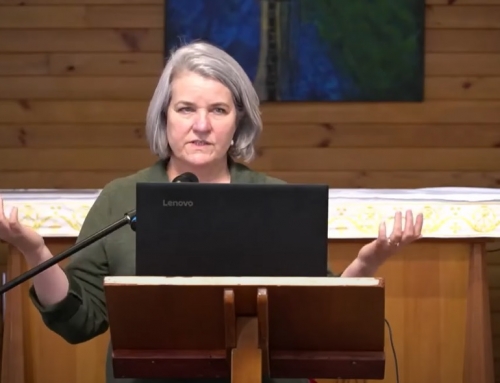In a long and insightful article for the New York Times, Lori Gottlieb explores the relationship between the modern ideal of Egalitarian Marriage and its impact on the sex lives of couples. One would assume that the more egalitarian the marriage, the higher the marital satisfaction and thus more sex would result. A study called “Egalitarianism, Housework and Sexual Frequency in Marriage,” which appeared in The American Sociological Review last year, has in fact found that these marriages have LESS sex, not more. We include some excerpts from Lori’s article as well as some commentary by sex therapist Barry McCarth and Attachment Theory Marriage Therapist Dr Sue Johnson.
Note: The views expressed by these authors are not necessarily consistent with the wisdom of the Catholic church… that’s where we’d love to hear your insights – please share your thoughts in the comments. B&F
Does a More Equal Marriage Mean Less Sex?
By Lori Gottlieb | December 7th, 2013
Today, according to census data, in 64 percent of U.S. marriages with children under 18, both husband and wife work. There’s more gender-fluidity when it comes to who brings in the money, who does the laundry and dishes, who drives the carpool and braids the kids’ hair, even who owns the home. A vast majority of adults under 30 in this country say that this is a good thing, according to a Pew Research Center survey: They aspire to what’s known in the social sciences as an egalitarian marriage, meaning that both spouses work and take care of the house and that the relationship is built on equal power, shared interests and friendship.
But the very qualities that lead to greater emotional satisfaction in peer marriages, as one sociologist calls them, may be having an unexpectedly negative impact on these couples’ sex lives.
A study called “Egalitarianism, Housework and Sexual Frequency in Marriage,” which appeared in The American Sociological Review last year (here), surprised many, precisely because it went against the logical assumption that as marriages improve by becoming more equal, the sex in these marriages will improve, too. Instead, it found that when men did certain kinds of chores around the house, couples had less sex. Specifically, if men did all of what the researchers characterized as feminine chores like folding laundry, cooking or vacuuming — the kinds of things many women say they want their husbands to do — then couples had sex 1.5 fewer times per month than those with husbands who did what were considered masculine chores, like taking out the trash or fixing the car.
It wasn’t just the frequency that was affected, either — at least for the wives. The more traditional the division of labor, meaning the greater the husband’s share of masculine chores compared with feminine ones, the greater his wife’s reported sexual satisfaction.
Granted, some might view a study like this with skepticism. Correlations don’t establish causation, and especially when it comes to sex, there’s always a risk of reporting bias and selective sampling etc….But as a psychotherapist who works with couples, I’ve noticed something similar to the findings. That is, it’s true that being stuck with all the chores rarely tends to make wives desire their husbands. Yet having their partner, say, load the dishwasher — a popular type of marital intervention suggested by self-help books, women’s magazines and therapists alike — doesn’t seem to have much of an effect on their libido, either. Many of my colleagues have observed the same thing: No matter how much sink-scrubbing and grocery-shopping the husband does, no matter how well husband and wife communicate with each other, no matter how sensitive they are to each other’s emotions and work schedules, the wife does not find her husband more sexually exciting, even if she feels both closer to and happier with him.
…Brines believes the quandary many couples find themselves in comes down to this: “The less gender differentiation, the less sexual desire.”
In other words, in an attempt to be gender-neutral, we may have become gender-neutered.
…This isn’t to say that egalitarian heterosexual couples aren’t happy. Lynn Prince Cooke, a professor of social policy at the University of Bath in England, found that American couples who share breadwinning and household duties are less likely to divorce. And Stephanie Coontz, author of “Marriage, a History,” told me that having a partner who does housework and child care has become a bigger factor in women’s marital satisfaction than many other factors that used to predict marital happiness, like a man’s level of income or shared religious beliefs.
The chores study seems to show that women do want their husbands to help out — just in gender-specific ways. Couples in which the husband did plenty of traditionally male chores reported a 17.5 percent higher frequency of sexual intercourse than those in which the husband did none. These findings, Brines says, “might have something to do with the fact that the traditional behaviors that men and women enact feed into associations that people have about masculinity and femininity.”
She calls these associations and behaviors sexual scripts. Men and women, she said, are continuously sending out cues that signal attractiveness to a potential partner, and often these cues involve “an ongoing reminder of difference and the sense of mystery and excitement that comes with the knowledge that the other person isn’t you.”
“I know what a 50-50 marriage should be like. But what is 50-50 sex supposed to be like?”
…“The passionate marriage used to be a contradiction in terms,” Esther Perel, the couples expert, told me. The quality of sex in marriage — and not just the frequency — is a relatively new conversation that has come about with more egalitarian marriages. In today’s marriages, she said, “we don’t just want sex; it has to be intimate sex. It has to be transcendent and self-actualizing.”
How impossible it often feels for two exhausted equals to meet each other’s sexual needs.
…In “Marriage: A History,” Coontz writes that one recent marital development “is that husbands have to respond positively to their wives’ requests for change.” Yet no matter how many requests wives make and how hard their husbands try to accommodate them, the women may still end up disappointed. After all, women are now coming into marriage with sexual histories and experiences on par with men’s, leading to expectations that are difficult to replicate in any marriage, especially now that people live longer and will be having sex, presumably with the same person, for decades more.
Similarly, older couples who can now wait and marry for love have less time together during their sexual primes and, if kids are in the plan, they may even miss that year or two of newlywed abandon. (Ask a 40-year-old couple trying and failing to conceive how much fun the sex is.) Pepper Schwartz, who serves as AARP’s relationships expert, observes that 50-year-olds of the past were often grandparents without great expectations about their sex lives. Now those same 50-year-olds might have a 10-year-old, placing them in a life stage formerly occupied by people in their 30s and subjecting them to pressure to maintain the culture’s view of “youthful sexuality” in marriage, especially with the ubiquity of Viagra and Estrace.
…There’s a phrase I often use in therapy with couples: “competing needs.” What do partners do when they have needs that directly conflict with those of their spouses? What if both have to work on the same weekend or be out of town at the same time? Who goes to the school play or compromises without feeling resentful? It used to be that husbands and wives operated largely in their own spheres with so little overlap that these questions rarely came up. But women now make up almost half of the U.S. labor force, and 23 percent of married mothers with children under 18 have a higher income than their husbands. In fact, total income is higher in families in which the woman is the primary breadwinner. When a 2010 study of business-school graduates asked, “What is success to you?” surprisingly, it was more women than men who chose “career goals,” while more men than women picked “personal growth.”
…Ian Kerner, a sexuality counselor and the author of “She Comes First,” sees couples struggle to find a ratio that works. “I work a lot with stay-at-home dads and men who work from home,” he said, “and one thing I hear a lot is that in theory, they’re really happy balancing flexible work with stay-at-home responsibilities, while their wives are out working full-time in corporate jobs. But at the same time, a common complaint is that Mom comes home and feels guilty for being away all day, and so much time has to be made up connecting with the children, who take first priority, that these dads feel lost in the mix.” In many couples, Kerner says, the wives start to feel disgruntled because their husbands get to see more of the kids, and the husbands, whose wives are controlling more of the spending, start to feel “financially emasculated.” Sometimes, he says, a vicious cycle begins: The husband feels marginalized and less self-confident, which causes the wife to lose respect for and desexualize him. Under these circumstances, neither is particularly interested in sex with the other.
…Is the trade-off of egalitarian marriage necessarily less sexual heat? It’s possible that the sexual scripts we currently follow will evolve along with our marital arrangements so that sameness becomes sexy. Regardless, more people marrying today are choosing egalitarian setups for the many other benefits they offer. If every sexual era is unhappy in its own way, it may be that we will begin to think of the challenges of egalitarian marriages less as drawbacks and more like, well, life, with its inherent limitations on how exciting any particular aspect can be.
“It’s the first time in history we are trying this experiment of a sexuality that’s rooted in equality and that lasts for decades,” Esther Perel said. “It’s a tall order for one person to be your partner in Management Inc., your best friend and passionate lover. There’s a certain part of you that with this partner will not be fulfilled. You deal with that loss. It’s a paradox to be lived with, not solved.”
Barry McCarthy Comments
What Happens to Sexual Desire in an Intimate, Egalitarian Marriage?
A healthy marital trend is the emphasis on an egalitarian bond, reducing traditional gender roles and power struggles, and sharing an intimate relationship, especially emotional problem-solving. For most couples, this results in greater marital satisfaction and security. The question is whether an intimate, egalitarian marriage promotes or subverts couple sexuality? The “politically correct” answer is it should promote marital sexuality, but that is not the reality for a large number of satisfied, securely bonded couples.
Does that mean the couple has only two sexual choices–revert to traditional double standard marital roles or find erotic sex through affairs?
We offer a different approach–awareness that the egalitarian/best friend marital style is not the right sexual style for the great majority of couples.
There are two major reasons for this – the egalitarian marriage puts such an emphasis on intimacy and mutuality (we label this the “tyranny of mutuality”) that the partners are very hesitant to take personal and sexual risks, so sex (especially playful and erotic sexuality), is avoided. The definition of a non-sexual marriage is being sexual less than ten times a year. Unfortunately, egalitarian/best friend marriages are vulnerable to the problem of sexual avoidance resulting in an intimate, but non-sexual, marriage.
For most couples, although certainly not all, the complementary couple sexual style is the “wise” choice–healthy in the short and long-term and emotionally and practically functional. The complementary couple sexual style allows each partner to value his/her “sexual voice” (autonomy) while acting like an intimate sexual team. The key concept is openness to “her”, “his”, and “our” bridges to sexual desire. Although the couple value mutual, synchronous sexual experiences, they are receptive and responsive to each partner’s initiations and preferences, including asynchronous sexual scenarios [i.e. sex is functional and satisfying for one partner but not the other – Ed] sensual, playful, erotic, as well as intercourse scenarios; and fun, playful, or lustful sexual encounters. Rather than sex always needing to be intimate, serious, and mutual, the complementary couple sexual style accepts the multiple roles and meanings of sexuality. It’s normal and healthy that sometimes the experience is better for her than him, sometimes better for him than her, and normal for 5-15% of sexual encounters to be dissatisfying or dysfunctional. A crucial emotional agreement is that asynchronous sexual experiences are healthy as long as they are not at the expense of the partner or relationship.
The answer to the dilemma of the low or no sex intimate, egalitarian marriage is to accept that for most couples their relational style is different than their sexual style. For many, we believe most, married couples the egalitarian/best friend marital style is superior. For many, we believe most, married couples the complementary sexual style is superior. In this way, the couple can establish and maintain a satisfying, secure, and sexual marriage.
Dr Susan Johnson
I am not sure what research my esteemed colleague Barry McCarthy is referring to, or how ‘equality’ or the categories he uses for marriage were measured, but to my knowledge secure attachment bonds have shown in numerous studies to have a wide and positive impact on the other two behavior systems in a relationship – care-giving and sex.
As I suggest in my new book – Love Sense: The revolutionary new science of romantic relationships, securely attached lovers have been shown in research to report higher levels of sexual arousal, intimacy and pleasure, have sex more frequently, and communicate more openly about sexual needs and desires. They also tend to more androgynous – less caught up in stereotypical sex roles that promote inequality in relationships. In a recent study (now in review) we found that we could shift distressed couples into more secure bonding and they then reported, at the end of therapy and two years later, that their sexual satisfaction has also improved.
Generally, secure attachment fosters emotional safety and connection together with relaxed engagement with others and confident exploration. Seems like a recipe for sex as a safe adventure!!
This was the same study where there was a brain scan component (published already in PLOS One, an online journal, in November ) where we found that, after therapy, holding the husbands hand changed the way the women’s brains responded to the threat of electric shock. Contact with the husband was such a safety cue that the women’s brains stayed calm and the shock, when it came, hurt less.
What is fascinating about this in terms of sexuality is that new brain scan research (by Gillath) suggests that women automatically tune into safety issues as part of becoming aroused, after all they are very physically vulnerable in sex. This may be one of the reasons why secure attachment seems to shape sexual satisfaction in women.
All this to say that the literature on attachment bonds and sexuality is just exploding. What is the news we can use here? What is the big picture?
First, perhaps that we have not understood passion. My favorite definition of passion is attachment longing linked to erotic exploration and play. The longing part matters. So much of the sex we see and even talk about on a professional level seems like avoidant, emotionless sex to me. Emotion is the music of any interaction – any dance between intimates. To dance without music, that is boring and one dimensional. If an “equal” couple have no emotion between them then indeed their sex life is likely to be soporific. More emotionless, avoidantly attached couples report that they focus on performance and sensation which seems to lead to a never ending search for novelty, but in fact they report less satisfaction with their sex life!
Second, the overall conclusion of the sex and bonding research is that the best recipe for a great lasting sex life is to work on the emotional responsiveness of your relationship – the security of your bond!
Barry McCarthy Responds
I really welcome this dialogue. In the past the marriage therapy and sex therapy people do not speak with each other and often do not trust each other – this is to the detriment of the married couples we try to help. I am a big fan of Sue’s clinical work and writing and there are several areas where there is solid agreement. Perhaps, the most important is that healthy marriages are satisfying, secure, and sexual. Also, that the most important sexual issue is desire, and erotic exploration and play is crucial in promoting desire. Also, that individual performance-oriented sex is not going to promote sexual desire in marriage.
There are other issues that the sex researchers and clinicians bring to the marriage field that deserve careful exploration and empirical and clinical research
- The respect for individual differences “Sexually, one size never fits all”.
- The new model of female sexuality as first class, not inferior to male sexuality. Female sexuality is more variable, flexible, complex, and individualistic – but first class.
- Mike Metz’s concept of Good Enough Sex which emphasizes sexuality as sharing pleasure rather than sex as a performance pass-fail test (erection and intercourse for men and orgasm for women).
- That sensual, playful erotic non-intercourse touch are all part of a married couple’s sexual repertoire rather than just affection or intercourse.
- Although couples value mutual, synchronous sexual experiences, the majority of sexual encounters among happily married couples are positive, but not mutual and synchronous.
There are also major differences which need to be carefully studied between marital and sexual approaches, not in an adversarial manner but to try to understand the complexity of sexuality in well-bonded, committed couples:
- Is it possible that the marital style and sexual style can be different?
- How to integrate intimacy and eroticism into a well-bonded marriage?
- The healthy and unhealthy uses of erotic fantasies (and scenarios) in well-bonded couples?
- Is attachment alone enough to promote marital sexuality?
- Guidelines for the use and misuse of asynchronous sexual experiences?
- The role and meaning of extra-marital sexuality, including sexual recovery from affairs?
- How to integrate medical interventions into healthy marital sexuality?
Again, my goal is to promote a dialogue between marital researchers/clinicians and sexual researchers/clinicians to help couples experience the healthy role of marital sexuality to energize their bond and reinforce feelings of desire and desirability.
McCarthy Sexual Style wisdom and books: here
Questions for Discussion
- What does an egalitarian marriage look like?
- How can couples maintain desire in a modern marriage?
- What insights from the Catholic faith and Theology of the body can we bring to this topic?





